Karlsruhe
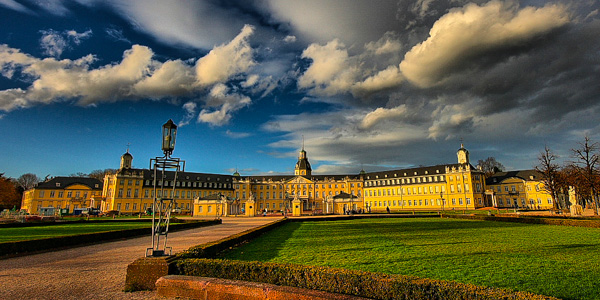
Karlsruhe palace. (Photo by Dominik "Dome")
This young Black Forest city is home to a great fine art museum and the amazing archaeological and historical collections of the Schloss Karlsruhe baroque palace
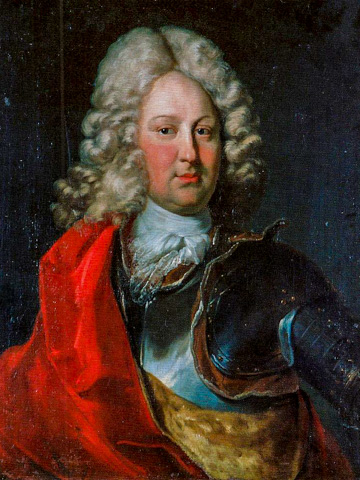
Portrait of Karl Wilhelm III by Johann Rudolf Huber (1710).
Karlsruhe is one of the vanishingly few famous place in Europe where, as a native Philadelphian, I can visit and say, "Yeah, my city is older than this."
"Carl's Rest" was just the wild fringe of the Hardter Wald forest in 1715 when Carl Wilhelm, Margrave of Baden-Durlach, decided to build a retreat here so he could escape his shrewish wife for the charms of his "Tulip Girls."
Technically, these were young female musicians and singers hired to entertain him, but they gave birth to an awful lot of illegitimate children all named either "Carl" or "Carline."
From that inauspicious start, a quirky little cultural center grew—helped along by the fact that it became Baden's capital in 1771, and later Napoleon elevated its leaders to Grand Dukes.
The Karlsruhe palace
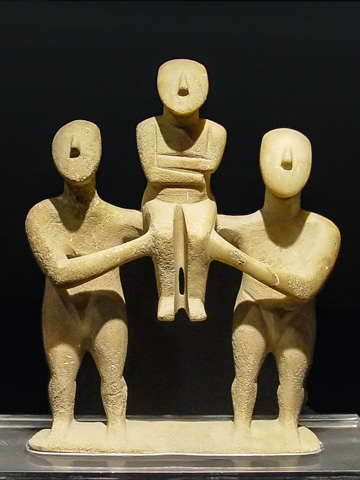
Early Cycladic figures, in the Landesmuseum of the Karlsruhe Schloss.
Karlsruhe's massive, canary-yellow Schloss (landesmuseum.de) was built in 1750.
Sadly, the fanciful baroque frippery pretty much stops once you get inside; the interior had to be rebuilt after extensive World War II damage, and now houses a fine Landesmuseum of archaeology and history.
There's a bit of everything here, from ancient Rome, Greece, and Egypt to exhibits on local Neanderthal and prehistoric cultures all the way though the Middle Ages, Renaissance, and Baroque eras to the 19th century.
Just about the only bit that truly Schloss-y is the Throne Room upstairs, which has been recreated in the baroque style to showcase the Crown Jewels of the Grand Duchy of Baden.
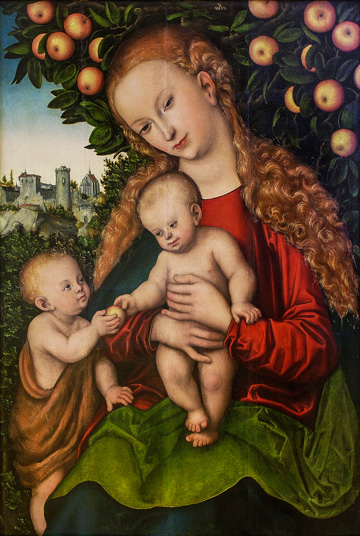
Virgin and Child with St. John under an Apple Tree (1535) by Lucas Cranach the Elder in the Staatliche Kunsthalle.
Also here is an amazing collection of Ottoman artifacts called the "Turkish spoils of war," taken by margrave Ludwig during his 17th century wars with the Turks.
Make sure you climb the 165 steps up to the top of the palace's tower, where you can look out and see the fan-shaped plan of this youngest of "old" German cities.
The State Art Gallery
The other star attraction in town is the Staatliche Kunsthalle (Kunsthalle-karlsruhe.de), packed with works by German masters like Dürer, Lucas Cranach, and Grünewald, as well paintings by such Dutch giants as Rubens, Rembrandt, and Van Leyden.
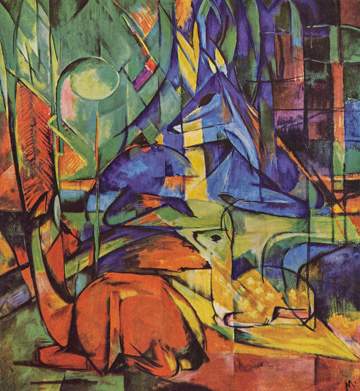
Rehe im Wald II (1914) by Franz Marc in the Orangerie of the Staatliche Kunsthalle.
In the neighboring Orangerie (same ticket) are housed works by those popular French Impressionist and post-Impressionists, including Monet, Degas, and Rodin, as well as some earlier 19th century works by Delacroix and Courbet.
Some 20th century German artists are also represented here, with fine Blaue Reiter group and Expressionist works by Franz Marc, Kokoschka, and Max Beckmann.
Tips & links
Bahnhofplatz 6
Karlsruhe
Tel. +49-(0)721-3720-5383
Karlsruhe-tourismus.de
You can swing it in half a day—though the riches of the museums might stretch that to more like five hours.
- Baden-Württemberg tourist info:
- Tourism-bw.com
- Germany.travel
- Stuttgart-tourist.de
- Blackforest-tourism.com
- Heidelberg-tourismus.de
- Bodensee.eu
- Oberschwaben-tourismus.de
- Konstanz-tourismus.de
- Tourismus.ulm.de
- Baden-baden.com
- Activities & tours:
- Viator.com
- ContextTravel.com
- Intrepidtravel.com
- Gadventures.com
- Infohub.com
- City-Discovery.com
- Localguiding.com
TRANSPORT
- Airfares:
- Momondo.com
- AutoEurope.com
- Vayama.com
- CheapOair.com
- Cheapflights.com
- DoHop.com
- CheapTickets.com
- Priceline.com
- Airports:
- Stuttgart-airport.com, Fly-away.de (Lake Constance); Other airports within 200km: Frankfurt-airport.com, Euroairport.com (Basel), Munich-Airport.com, Zurich-airport.com
- Car/RV rentals:
- Autoeurope.com
- Momondo.com
- RentalCars.com
- CheapOair.com
- AutoSlash.com
- Trains:
- Bahn.de
- Raileurope.com
- Seat61.com
- Apartments & villas:
- Vrbo.com
- Booking.com
- Venere.com
- Rentalo.com
- Homeaway.com
- Belvilla.com
- Interhomeusa.com
- Airbnb.com
- Villasintl.com
- Craigslist.org
- Hostels & campgrounds:
- Hostelworld.com
- Gomio.com
- Hostelbookers.com
- HostelsClub.com
- Hostelz.com
- Booking.com
- Venere.com
- Agriturismo (farm stays):
- Landtourismus.de
- Bauernhofurlaub.de
- Booking.com
Related Articles |
|
This article was by Reid Bramblett and last updated in July 2014.
All information was accurate at the time.
Copyright © 1998–2013 by Reid Bramblett. Author: Reid Bramblett.
